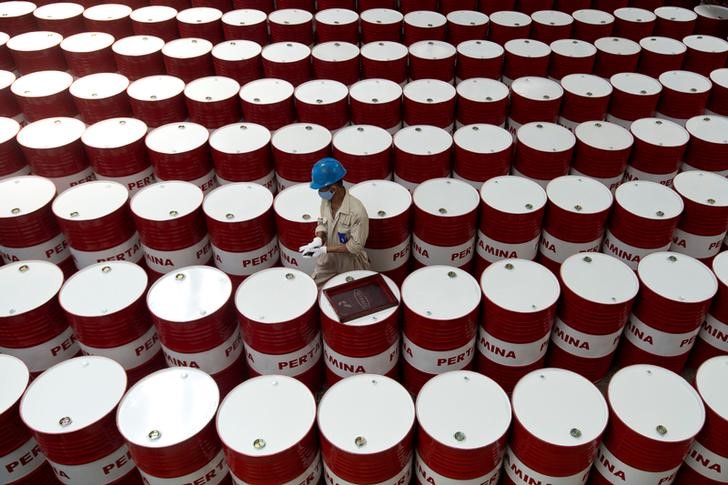Oil steadies following sharp weekly losses
Investing.com -- Oil prices steadied on Monday as traders eyed the impact of a possible hurricane off the US Gulf Coast and gauged the market reaction to last week's nonfarm payrolls report.
By 10:14 ET (14:14 GMT), the Brent contract had added 0.3% to $71.28 per barrel, while U.S. crude futures (WTI) were trading up by 0.4% at $68.05 a barrel. Brent had fallen by 10% at Friday's close to its lowest level since December 2021, while WTI had decreased to its lowest mark since June 2023, according to Reuters.
The US National Hurricane Center said over the weekend that a weather system in Gulf of Mexico is projected to turn into a hurricane prior to hitting the northwestern US Gulf Coast -- a crucial region for American refining capacity.
Analysts pointed to recent supply disruptions in major oil producer Libya as another trend bolstering prices, Reuters reported.
Elsewhere, the increased potential of upcoming Federal Reserve interest rate cuts following a softer-than-expected August employment report helped support crude, although uncertainty still swirls around the size and pace of the reductions. In theory, a dip in borrowing costs could bolster economic activity and spur an uptick in oil demand.
Meanwhile, executives at global commodity traders Gunvor and Trafigura told the Asia Pacific Petroleum Conference in Singapore that oil prices could trade in a range of $60 to $70 due in part to ongoing tepid demand in top oil importer China.
Analysts at ING said the worries around China will likely lead to discussions at the conference over "what options [the OPEC+ oil group] has to try to stablise the market." Last week, OPEC+ announced it had agreed to postpone a planned output increase for October by two months in a bid to steady tumbling oil prices.
"While OPEC+ cuts leave the market a bit tighter for the remainder of this year, this doesn’t resolve the surplus that is expected next year," the ING analysts said.
Reuters contributed to this report.
Source: Investing.com
